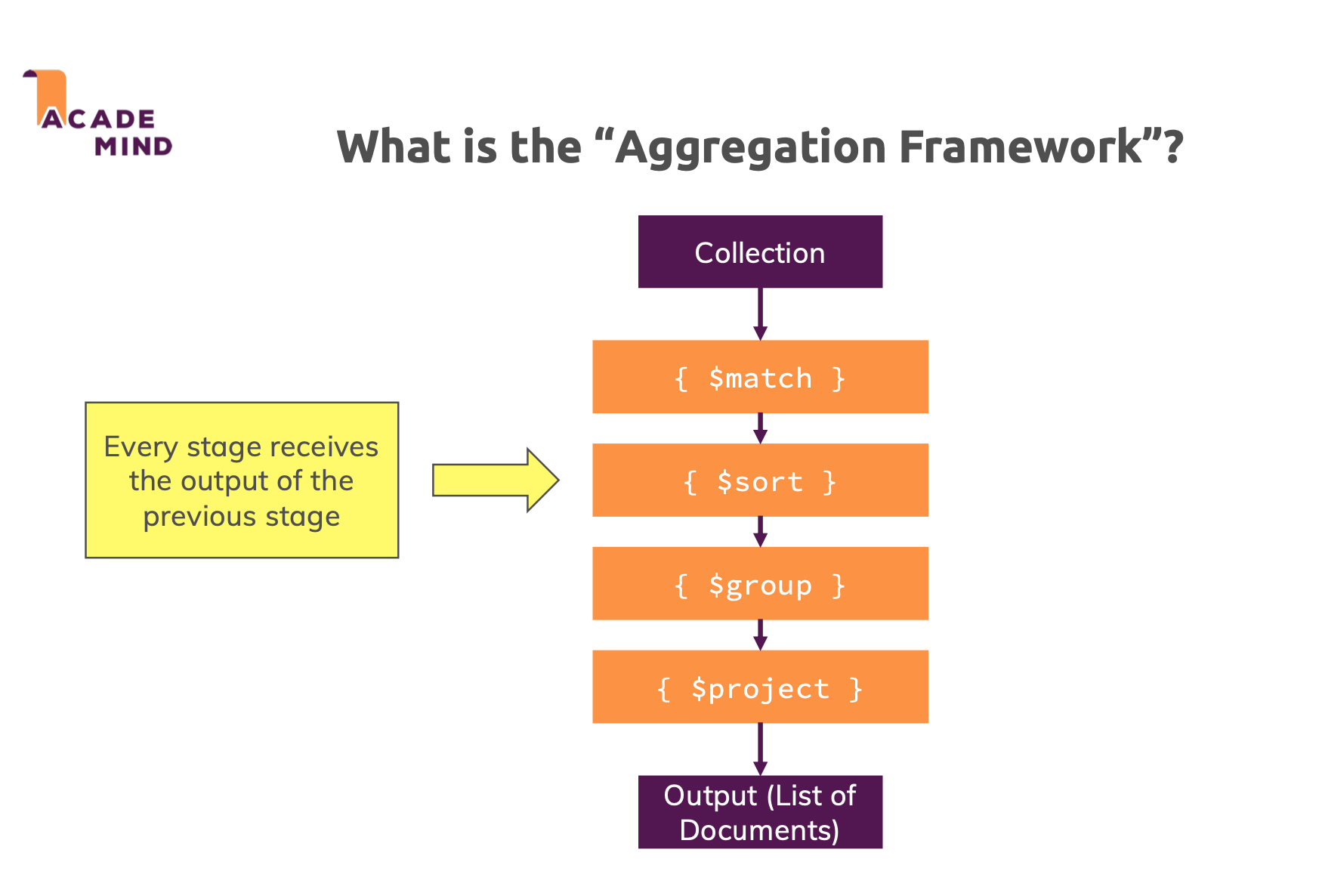理解聚合框架
What is the Aggregation Framework?
Aggregation Framework(聚合框架)是 MongoDB 讀取資料的方法之一,
可針對讀取的資料做許多操作,非常適合分析或計算數據。
聚合框架彷彿為資料建立了管道(Pipeline)。使用者從資料庫中找尋資料時,
就好比將資料庫中所有資料送入管道,資料在管道中會經過數個 Stage,
每個 Stage 可對資料進行篩選、群組化、轉換、排序等處理,最後以使用者想要的格式輸出資料。

Understanding the Aggregation Framework
使用 aggregate() 即可執行聚合操作,此時傳入的引數為一陣列,此陣列猶如 Pipeline,
其元素由 Document 物件組成,每個物件都是一個 Stage。
Aggregation Framework 指令格式
db.collection_name.aggregate([
{ $stage1: {} },
{ $stage2: {} },...
])
Aggregation Framework 指令範例
db.collection_name.aggregate([
# Stage 1:篩選資料,找出 field1 的值為 value1 的資料
{ $match: { field1: value1 } },
# Stage 2:資料群組化,將 field2.property1 的值相同的資料整合為相同群組,並賦予欄位別名,
# 並且以 alias2 顯示群組內的資料筆數。
{ $group: { _id: { alias1: "$field2.property1" }, alias2: { $sum: 1 } } },
# Stage 3:資料排序,以 alias2 的值為排序依據,做 DESC 排序。
{ $sort: { alias2: -1 } },
])
提示
只要是有意義的操作,不必刻意限制 Stage 的數量,
同一 Pipeline 當中也可能重複設定相同類型的 Stage(例如 $project)。
同樣的,每個 Stage 處理資料的程序也可以極其繁複。